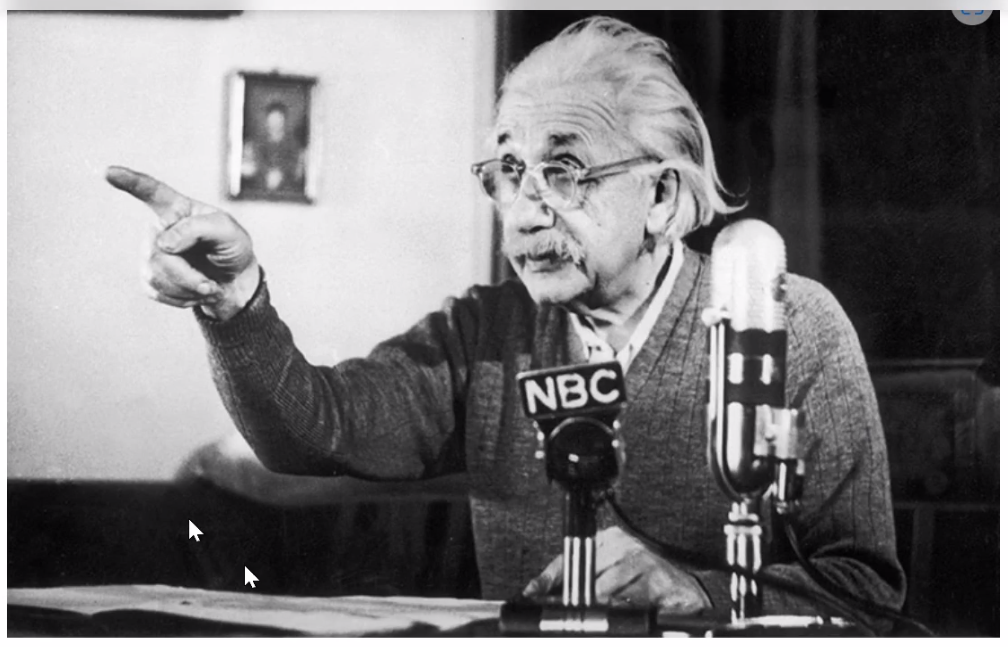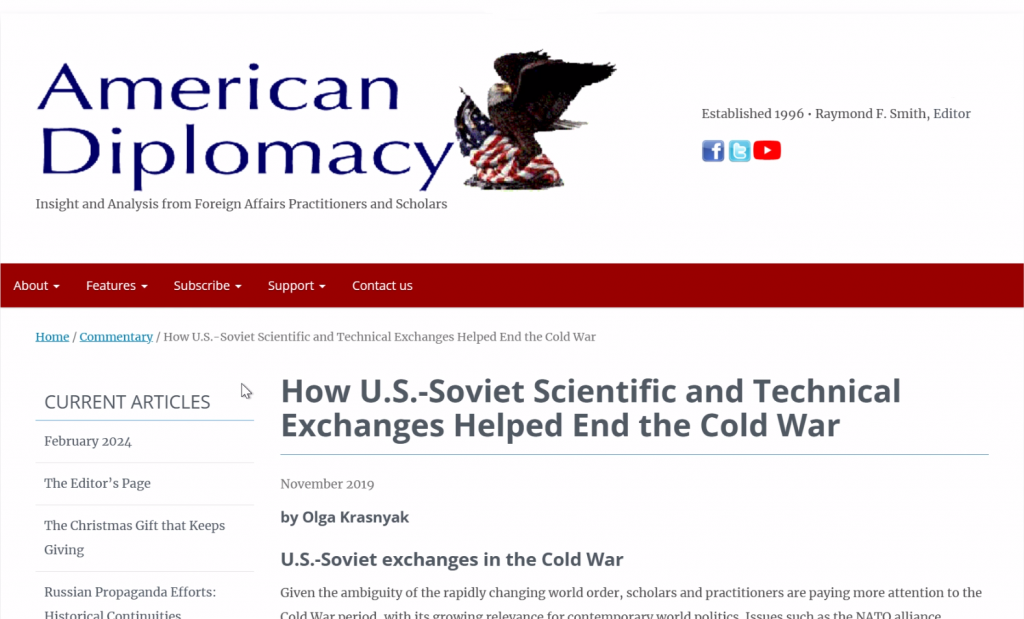
Dennis Stamires (born on the island of Zakynthos-Zante Greece) is an American scientist and expert in heterogeneous catalysis, solid-gas interface interactions, and electron transfer. Dr. Stamires graduated from the prestigious international High School Anargyrios & Korgialenios School of Spetses. The school and its staff had a mix of teachers coming from European Countries mainly from England and France. The school operated academically using British Standards used by the internationally famous schools of Eton and Harrow. He received a B.Sc. in chemistry from the University of Leeds in 1953, an M.S. in physical chemistry at Canisius College in 1958, and a Ph.D. in chemical physics from Princeton University in 1962 working in the research group of Professor John Turkevitch, who was a member of the Manhattan project working with Robert Oppenheimmer, Stamires’ subsequent career was influenced by the university’s efforts at that time to bring closer the disciplines and research projects of chemistry, physics, and the Princeton Institute of Advanced Studies, resulting in the formation of chemical physics as a discipline, as spearheaded by Turkevitch’s advisor Sir Hugh Taylor before he left Princeton for Harvard University where he made similar contributions (Heterogeneous Catalysis: Selected American Histories
Dr. Stamires began his independent scientific career at Union Carbide Linde R&D Division, working on the electrical properties of metal-ion-exchanged synthetic zeolites (molecular sieves) and preparation of zeolitic solid-state electronic devices, including humidity sensors and dry-cell high-temperature batteries. Key to this work was showing experimentally that X-type wide-pore synthetic faujasite zeolites are relatively unstable and lose their crystallinity when exposed to thermal or hydrothermal treatments, a problem solved by replacing zeolite X with its isomorph zeolite Y containing a higher silica-to-alumina molar ratio. Aditionally, Dr. Stamire determined experimentally the similarities in composition and physico-chemical properties of the synthetic zeolites X and Y to those of the natural mineral ore Faujasite, which was found to be in-line within the uniform continuous variation of said properties with compositional SAR of the crystal unit cell. Most importantly, with this experimental work Dr. Stamires, demonstrated that the totally, arbitrary and scientific baseless division of the continuous variation of composition with physicochemical properties, at 3.6 SAR claimed by Union Carbide-Linde Division, and separately patented for X and Y as being two different materials, it is not correct and grossly misleading the public researchers and users of the synthetic zeolites/molecular sieves of the Faujasite type. Please see reference: Stamires D. Properties of the Zeolite, Faujasite, Substitutional Series: A Review with New Data. Clays and Clay Miner 1973;21:379-389. http://dx.doi.org/10.1346/CCMN.1973.0210514
Stamires’ extensive work to improve the thermal / hydrothermal properties of the synthetic Faujasite-like zeolite led to the discovery with his colleagues of the catalytic-active -metal ion-exchanged Y and Ultrastable (USY) or Decationized Y faujasite zeolites and their incorporation into fluid catalytic cracking (FCC) and Hydrocracking catalysts.(HCC). These substantive, game changing advances actually, re-energized the global petroleum refining industry since these new zeolire-containing catalysts helped increase the volume and availability at the world market places of the petroleum-derived gasoline, diesel, jet, and oil fuel products sold at lower costs at the pump. In essence, a revolutionary pioneering contribution to the world’s energy consuming population at a very critically difficult period of world- crises caused by the infamous Global Oil Embargo Crises, as shown in the photo poster (below) at a typical gas station. For this innovative and societal fundamental and highly valuable contributions, Dr. Stamires and Dr. Jule Rabo, Dr. James Boyle, and Dr. Paul Pickert were proposed as candidates for receiving the Nobel Prize for Chemistry. Dr. Stamires and Dr. Jule Rabo were also interviewed by members of the American National Academy of Sciences.
In 1965, Dr. Stamires joined the new Douglas Advanced Research Laboratory (formed by Douglas Aircraft Corp., later McDonnell Douglass and then Boeing Co.) in Huntington Beach, California. Among other projects, he worked with Nobel Laureate Willard F. Libby on experimental assessment of automobile and supersonic aircraft engine exhaust gases to understand atmospheric destructive pollution effects on stratospheric ozone using electron spin resonance (ESR) spectroscopy. These studies aided the U.S. Department of Transportation decision to not allow SST aircraft to fly over the continental U.S. He also worked on the construction of a high-resolution Electron Nuclear Double Resonance (ENDOR) spectrometer for improving the accuracy and resolution of regular electron spin resonance (ESR) spectrometry for examining electron-nuclear interactions in single crystal and in polycrystalline materials.
Stamires joined Filtrol/Kaiser Aluminum & Chemicals Corp. in Los Angeles in 1972, becoming Filtrol’s vice president of R&D in 1979 overseeing development and production of low-cost synthetic faujasite-type zeolites and FCC specialty catalysts for producing low-sulfur and low-nitrogen fuels, including high-octane gasoline. In 1982, Stamires was offered a consulting position at AkzoNobel in the Netherlands to assist the catalyst division in reviving its struggling global business, leading to development of next-generation FCC and hydroprocessing catalysts and their production facilities. Subsequently, AkzoNobel bought Filtrol in 1989 and then sold its catalyst business to Albemarle in 2004, where Stamires remained as a full-time consultant until 2006 working on petroleum refining catalysts and new fire-retardant products.
As a clean environment advocate motivated by a desire to develop better fuels and reduce air pollution, work that was not targeted at Albemarle, Stamires joined new start-up company BIOeCON in the Netherlands as a consultant with the purpose of developing catalytic cracking processes for converting waste biomass to transportation fuels. When BIOeCON joined with Khosla Ventures for financing in 2007, Stamires joined the new Houston-based KiOR as a consultant with the title of Senior Fellow-Scientist and as a member of the KiOR management team, remaining in those roles until late 2013.
Throughout his career, Dr. Stamires has collaborated with global leading scientists and engineers in developing catalysts and specialty chemicals for a range of applications with societal benefits. For example, in collaboration with Professor William Jones at the University of Cambridge he helped develop new cellular drug-delivery nanocarriers used presently in chemotherapy for cancer treatments. These nano materials named Layered Double Hydroxides, (LDHs) can be used globally and successfully for many years ever since a therapeutic nanocarriers in the well known and globally established practice of Chemotherapy. Specifically for targeted deliveries of radioactive chemical elements to carcinogenic body tumors. A further advanced development of this medical technology includes into the (LDH) nanocarrier 2 radioactive elements having different half-lives. Specifically, one with a longer half-life and one with a shorter half life.
Thus, the carcinogenic tumor is first receiving stronger radiation following with a weaker radiation to destroy the original carcinogenic tumors and the newly formed ones preventing the growth and spreading of the cancer.
Dr. Stamires’ work is described in 710 patents and patent applications, and 32 pending patent applications, 128 scientific journal publications, and 94 scientific conference oral presentations. He is a member of the New York Academy of Science and member of The Circle of Hellenic Academics in Boston, and he has been a member of the American Physical Society and the American Chemical Society and the Royal Society of Chemistry, (RSC).
“This school was were I went before I went to University. This school was modeled on two prestigious British Schools Eton College and Harrow School.”
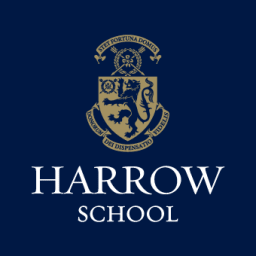

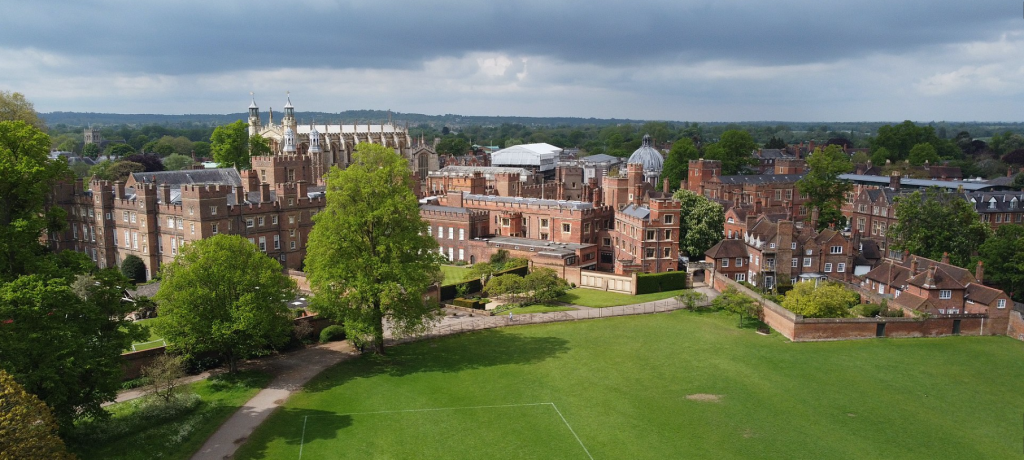
“Eton College…Many of my teachers in High School came from this amazing college.”

“Harrow College, London. Teachers from this incredible school, would come periodically to teach at my High School.”
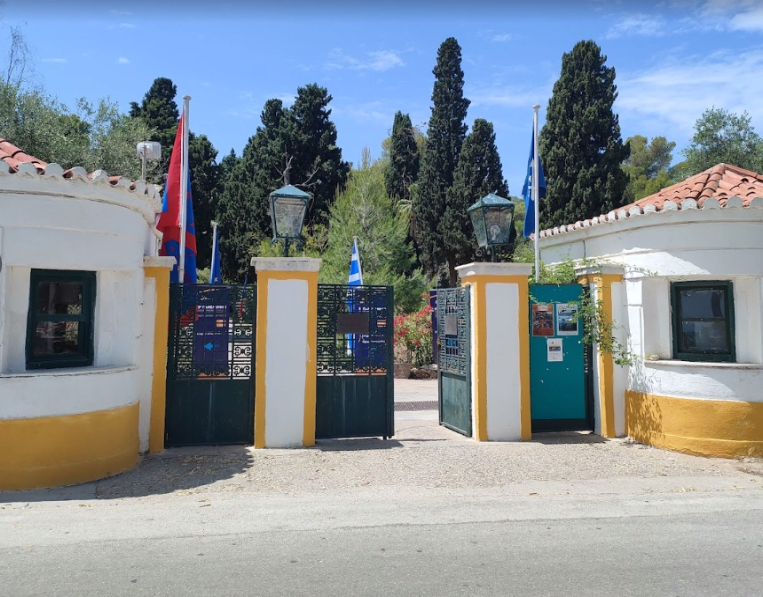
The guarded entrance to the Anargyrios & Korgialenios School of Spetses.
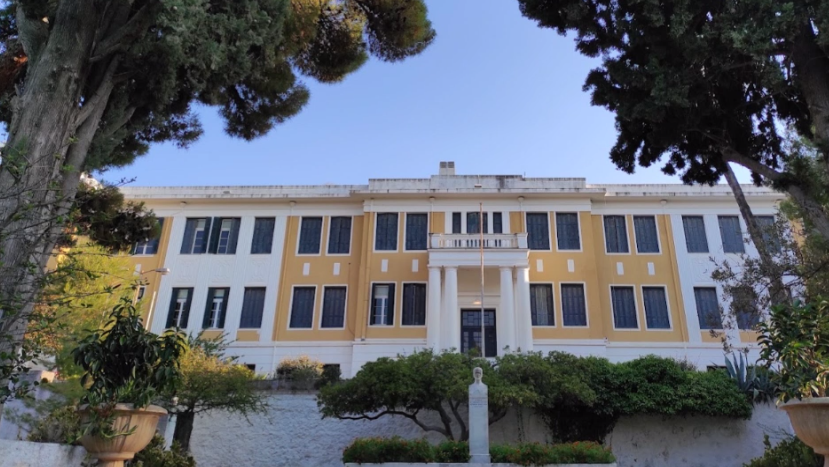
“One of the fortunate events in my life is Mr. Marinatos served on the board of directors of my High School..Serveral years later in we worked together as colleagues in archeological excavations throughout the world!”

“The sunlight in the water changes the color of the sea over time! This is called
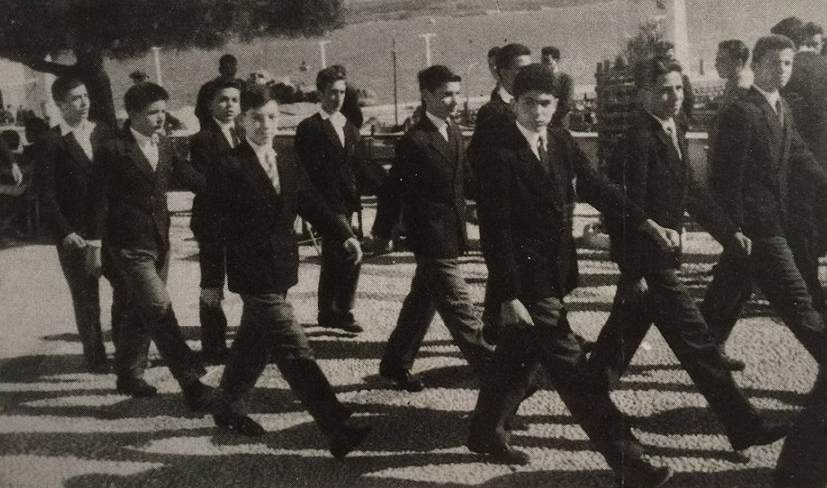
“Walking to Church on Sunday with my fellow classmates. Glorious!”
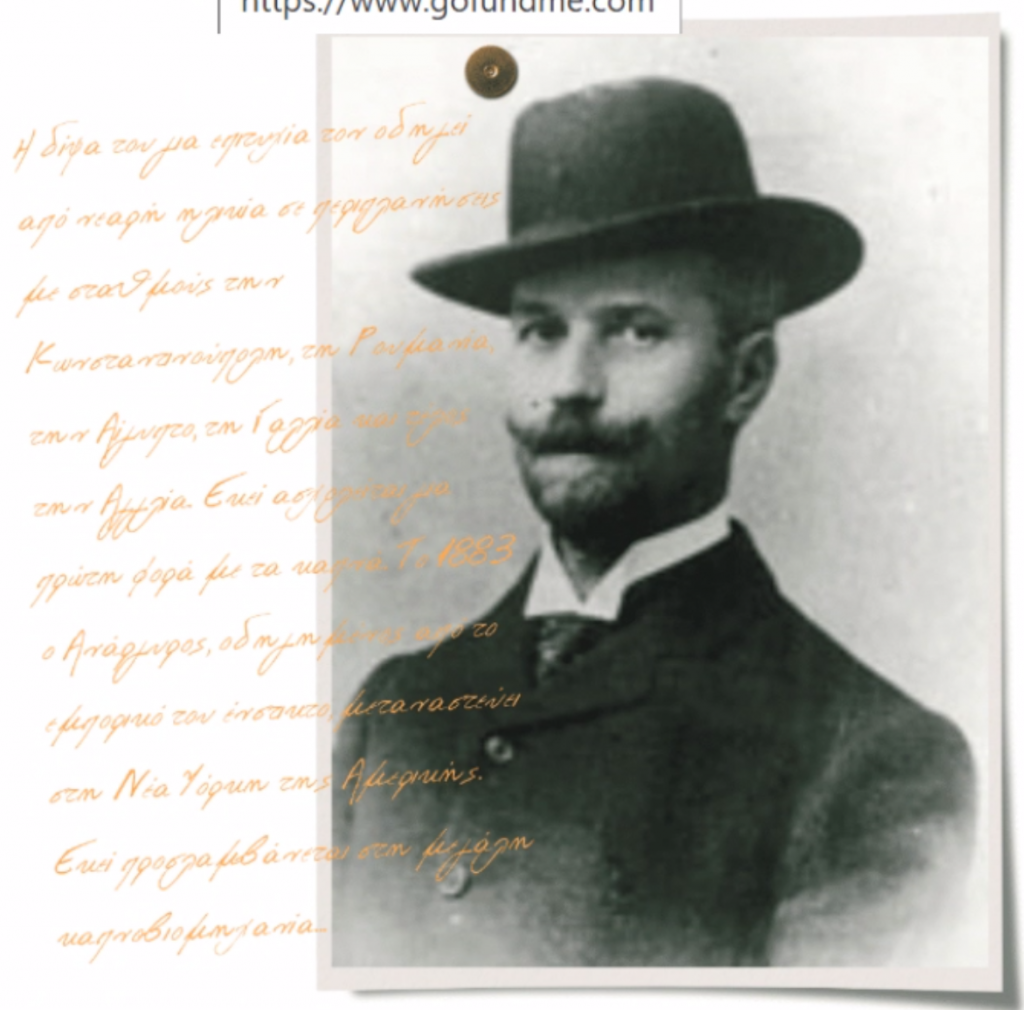
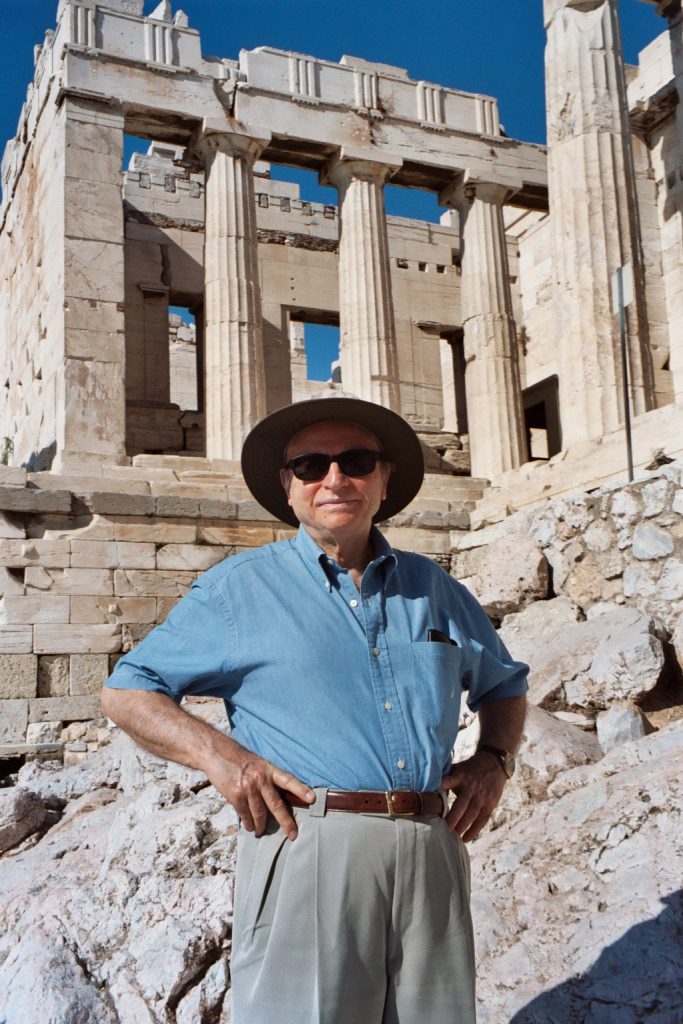

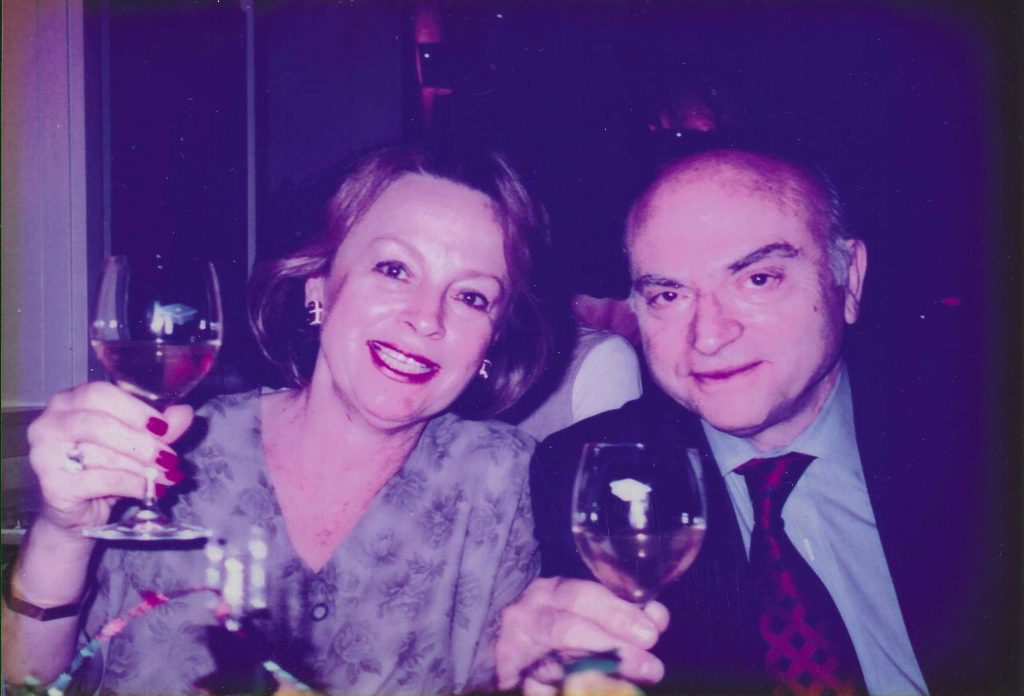
“My wife Hourola and I enjoying life…I was blessed with over 50 years of marriage. She passed away from Covid-19 in 2021.”
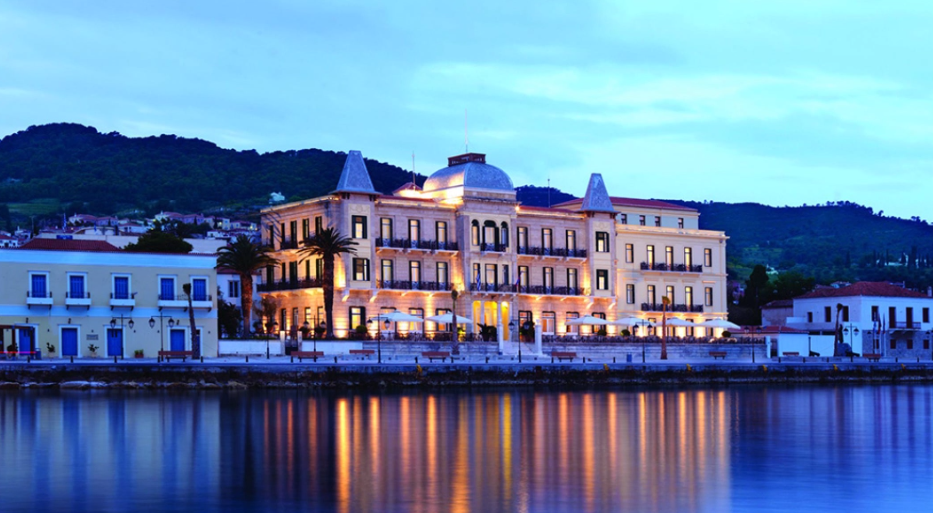
“This is the internationally famous Poseidonion Hotel. Luxury Accommodations the management and staff collaborated with the school during the school year. Located on Spetses Island.“
“SCIENTIST MUST RISE ABOVE POLITICS – AND RESTATE THEIR VALUE IN SOCIETY!”
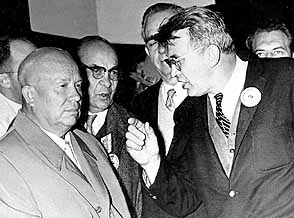
Turkevich (r) with Nikita Khrushchev in 1959
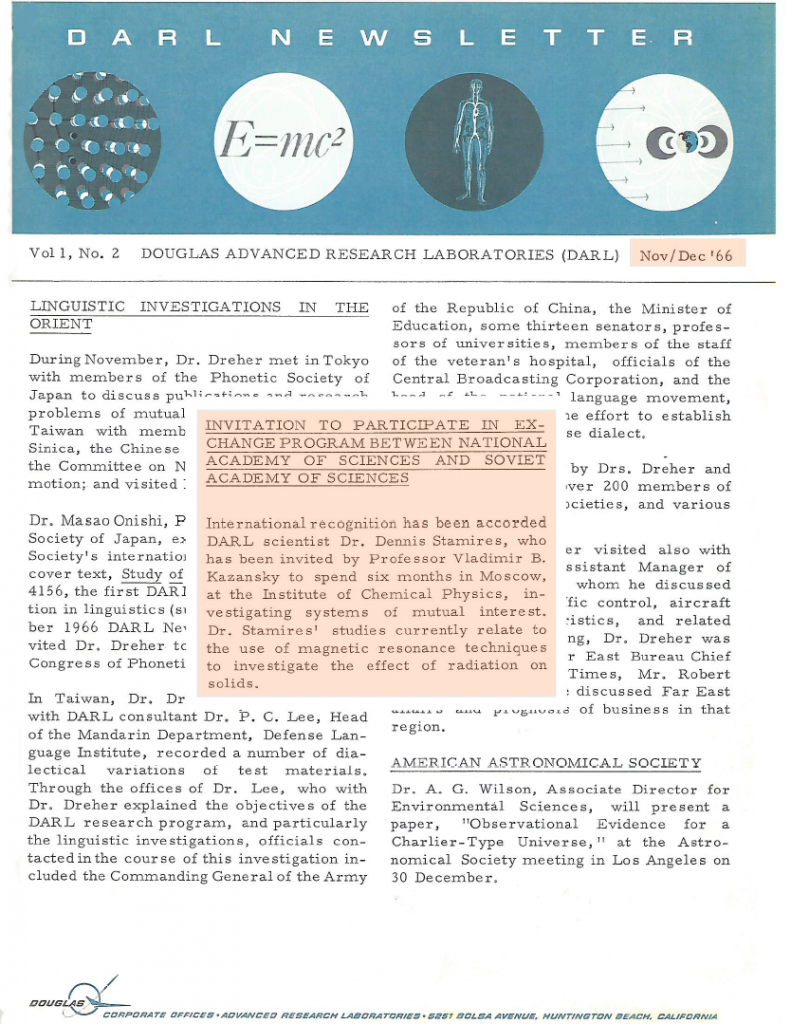
Douglas Advanced Research Laboratory newsletter November/December 1966
“The conversation between First Secretary of the Communist Party of the Soviet Union Nikita Khrushchev and Professor John Turkevich from Princeton University resulted in the improved relations between the Soviet and American Scientific communities. Which was a tool to improve the political relationship between the two superpowers and hopefully put a thaw in their cold war. To that end, they concluded and agreed to a mutual exchange program between scientist and a start to a good-will program. The American Academy of Science was very helpful in initiating this program.”
https://pubs.acs.org/isbn/9780841207783). Among his resulting achievements, and for his major societal contributions, Dr. Stamires received an invitation by the Soviet Academy of Sciences to participate in an international exchange program at the Moscow Institute of Chemical Physics in collaboration with Professor Vladimir B. Kazansky on the physicochemical and catalytic properties of acidic and basic porous solids and was appointed by the U.S. National Academy of Sciences to host Kazansky in meetings with catalysis research groups at the University of California, Berkeley, and Stanford University.
An additional accolade which was received by Dr. Stamires from the American National Academy of Sciences, was his assignment to be the host of Academician Professor Vladimir B. Kazansky to visit and discuss research cooperation in Universities in California to that Dr. Stamires together with Professor Kazansky visited the research group at U.C. Berkeley working in solid state physics and catalysis. They also visited scientists at Stanford Univerisity and discussed new research programs of new porous materials.
The highlight of the meeting at Stanford University was with Professor Michel Boudard, a chemical engineer and a world expert in Catalysis who was previously a Professor at Princeton University who Dr. Stamires had met when he was doing research there under the supervison of Professor John Turkevich. The very productive meeting at Stanford University with the research people, was highlighted by a superb dinner at Boudards’ House where his wife Marina prepared a superb French dinner.
The role of scientific exchanges in international security and arms control talks…
These exchanges were a part of the process leading to the signing of the ground-breaking INF Treaty and the peaceful ending of the cold war.
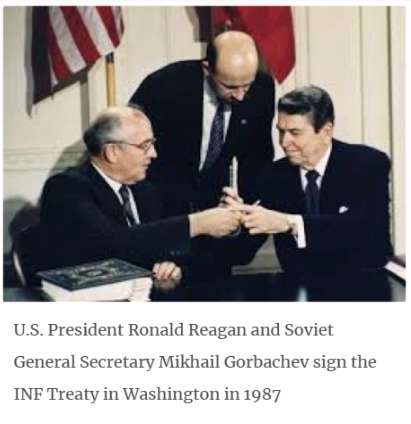

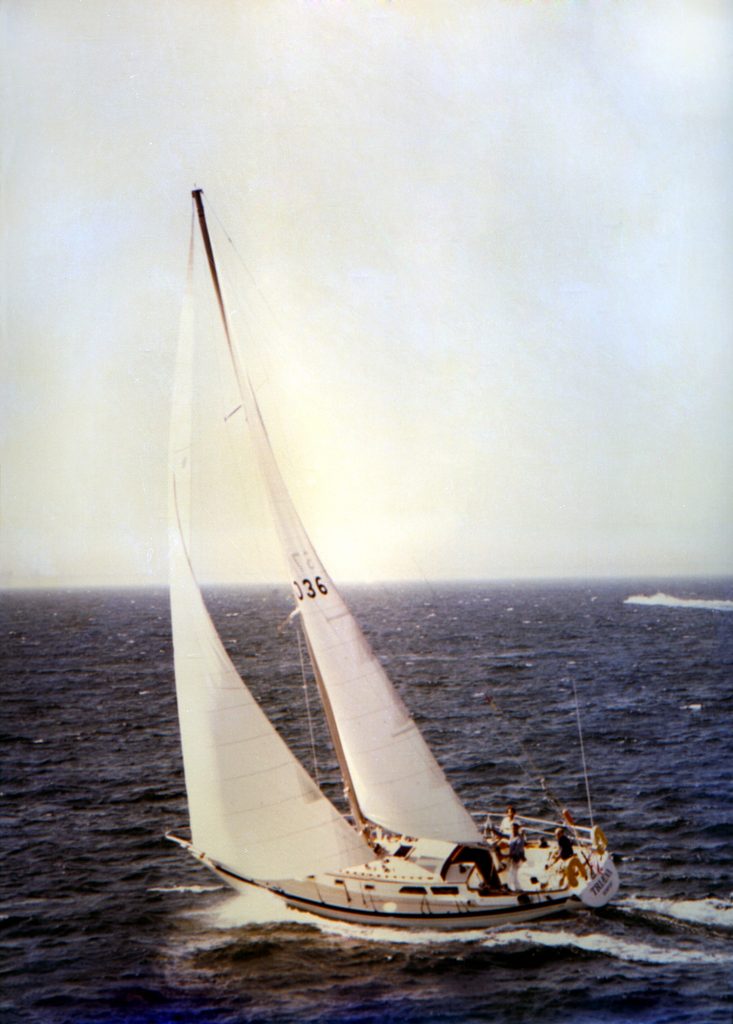
“Dr. Donald Jacobson and I developed a sailing system to improve the performance of the Trienna. We worked together on a sensor system that works to increase the speed on the sails.”
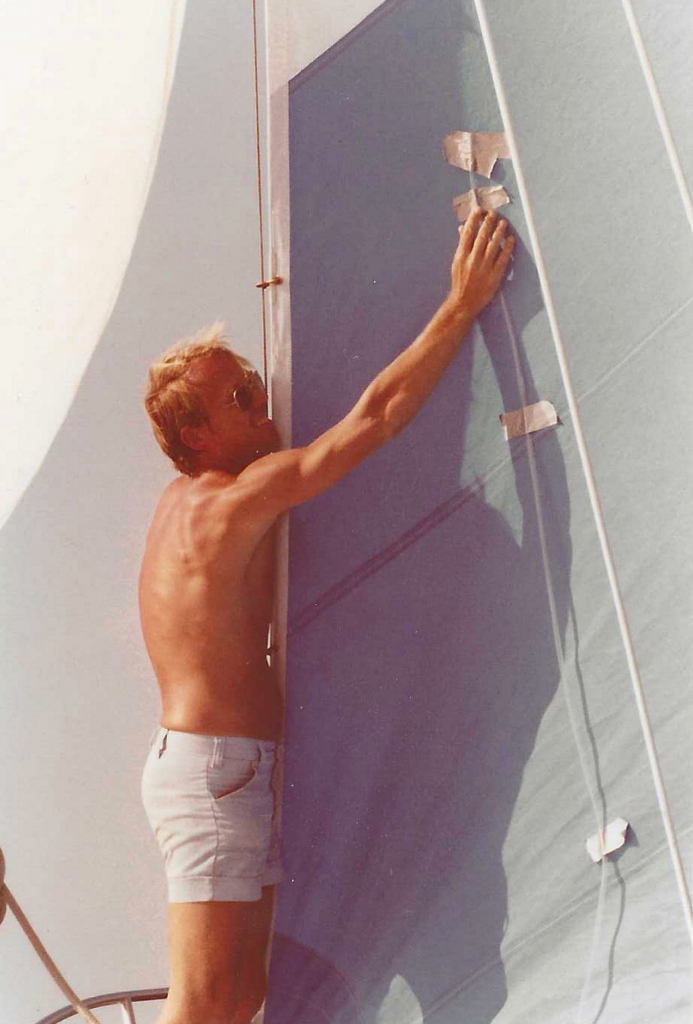
Dr. Stamires 44 foot sloop “Triaena” based out of Newport Beach, California. Built in San Diego (Dr. Stamires at the helm).
“My boat would sleep people comfortably. I made many a trip to Catalina, San Diego, Cabo San Lucas, Porta Viorta and Honolulu.”
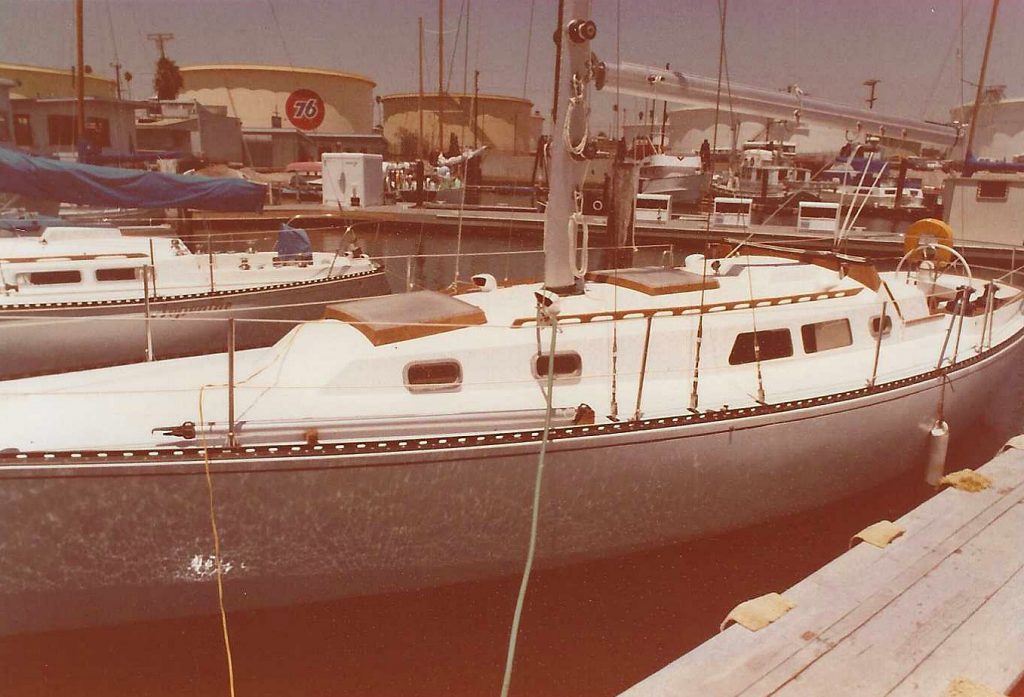
“The Trienna docked at the Bahia Corinthian Yacht Club in Newport California, California U.S.A.”.
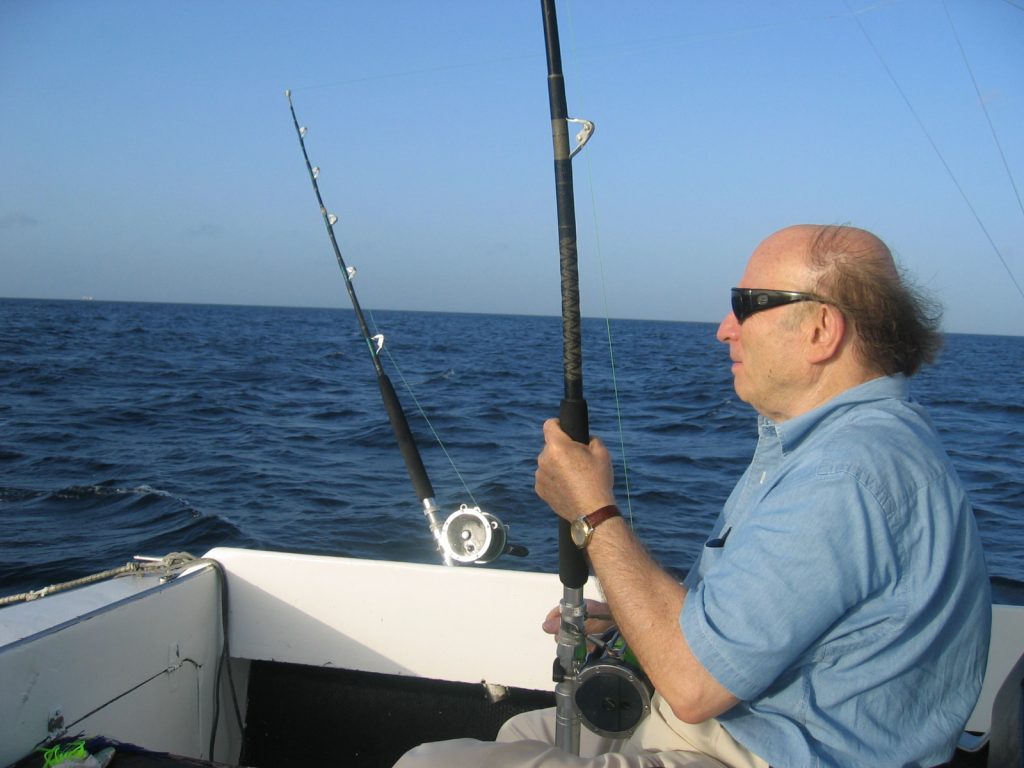
Fishing off the Catalina coast offers a variety of opportunities, including targeting tuna, yellowtail, calico bass, white seabass, halibut, barracuda, and California yellowtail. The island’s coves, beaches, and reefs provide an array of fishing habitat.
“To me, it was not the fishing but the sailing really fast that drove me to the sea.”
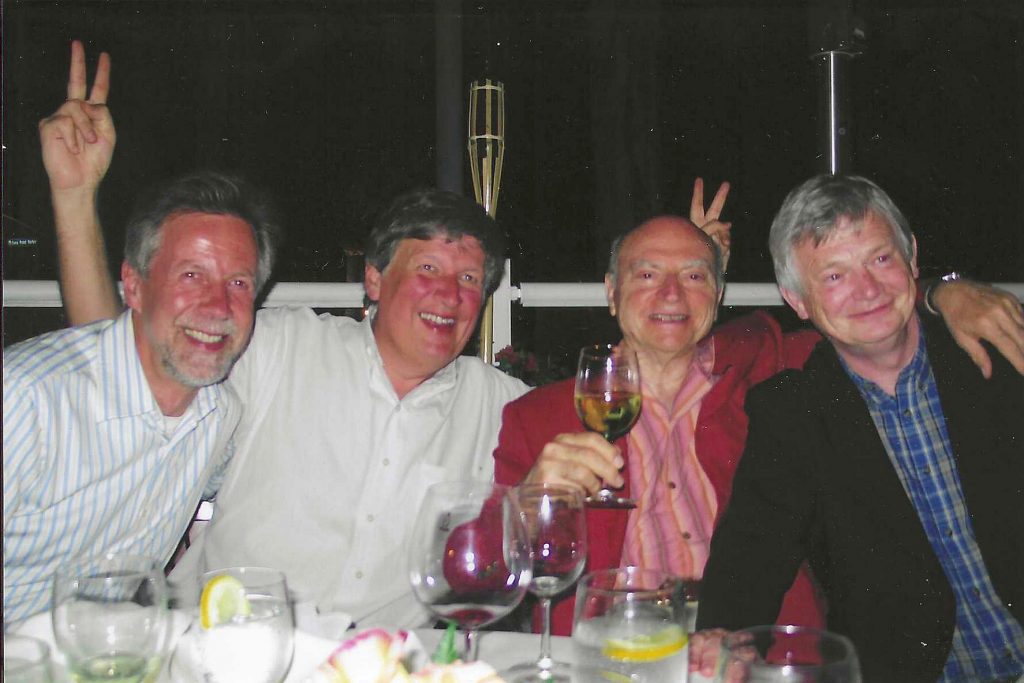
“My Patent Attorney Mr. Rasser, Paul O’Connor, Dr. Dennis Stamires, Professor Bill Jones researching the local night life in Southern California.”
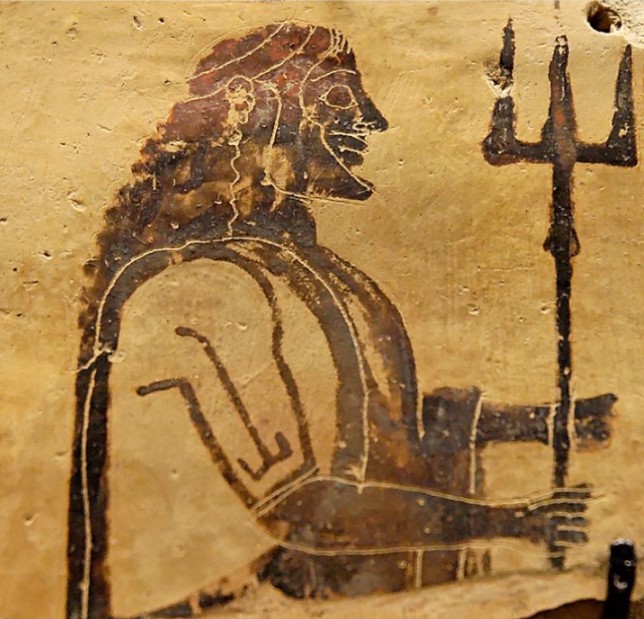
“Poseidon with his trident, Corinthian plaque, 550-525 BC”
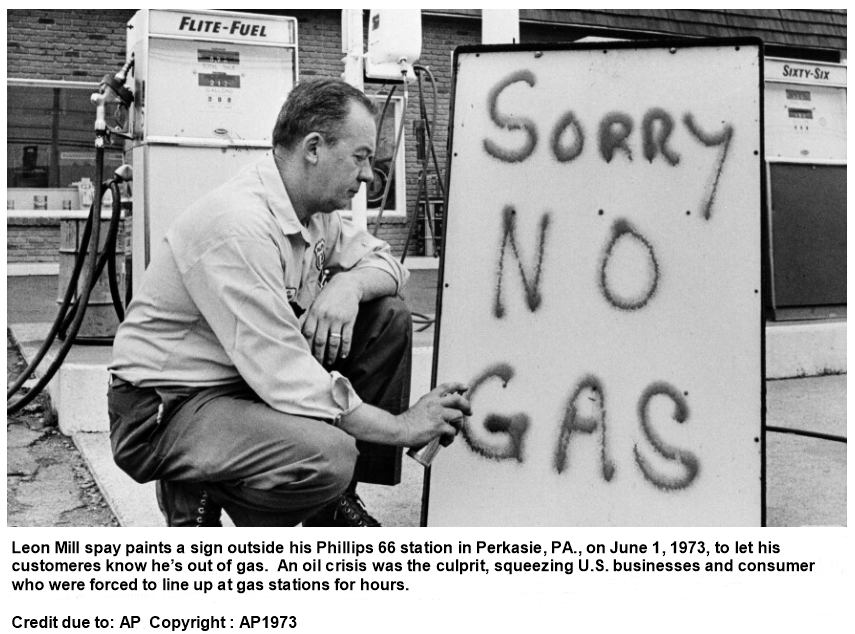
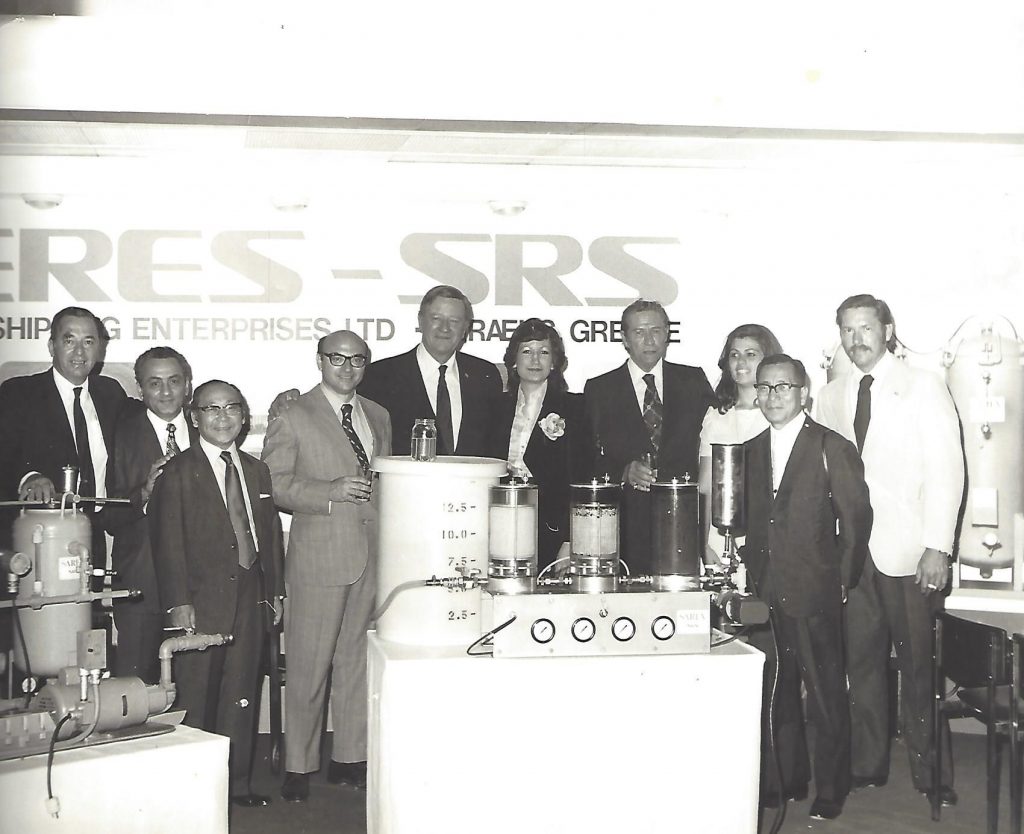
This photo was taken in 1972 at Zappeion Palace in Athens Greece. From left to right Joseph Defranco, George Livanos, Dr. Dennis Stamires, John Wayne, Bill Chambers, along with other Deco staff members and executives from Sinopec/China and Nippon Oil Company/Japan.
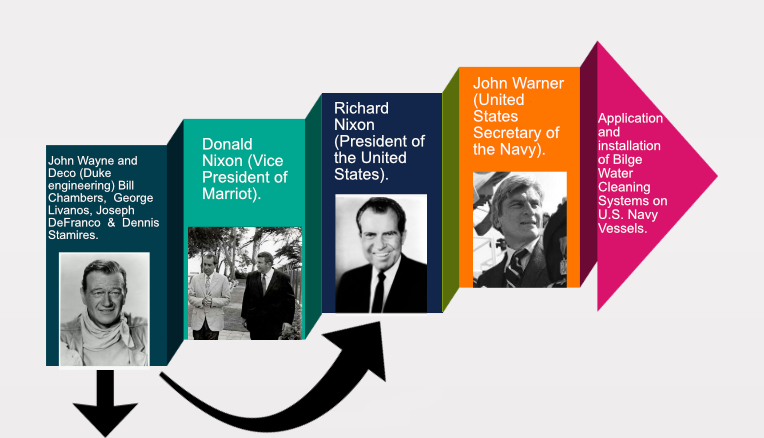
“SAME GROUP OF PEOPLE NOW DO SOMETHING COMPLETELY DIFFERENT ON ANOTHER URGENT MATTER…TOTALLY A DIFFERENT FIELD!”
THIS GROUP OF PEOPLE CONCERNED ABOUT THE SHORTAGE AND HIGHER PRICES OF FOSSIL DERIVED FUELS, GASOLINE, DIESEL, AND JET FUELS DUE TO THE OIL EMBARGO AND ADDITIONALLY MUCH MORE CONCERNED ABOUT THE IMPACT OF FOSSIL DERIVED FUELS ON THE DESTRUCTION OF THE ATMOSPHERIC OZONE AND THE LOSS OF THE PROTECTIVE SCREEN OF UV RADIATION TO THE GLOBAL HUMANITY. THEY DECIDED TO ALEVIATE THESE PROBLEMS BY DEVELOPING A PROCESS THAT WILL PRODUCE TRANSPORTION FUELS BY CONVERTING WASTES SOLID MATERIALS TO LOW-COST FUELS. THE PROCESS WAS PATENTED BY DECO INDUSTRIES AS DESCRIBED IN U.S. PATENT 4,235,676 ISSUED NOVEMBER 25TH 1980 BY INVENTOR R. WILLIAM CHAMBERS. THE MATERIALS USED WERE MUNICIPAL ORGANIC WASTE, INCLUDING PAPER, CARDBOARD, AND PLACTICS, AND WERE OBTAINED BY CONTRACTING WASTE MANAGEMENT COMPANIES IN SOUTHERN CALIFORNIA. ADDITIONALLY, THEY HAVE MADE CONTRACTUAL AGREEMENTS WITH COMPANIES IN THE MIDWEST AND SOUTHERN U.S. STATES. THESE COMPANIES COLLECT USED AUTOMOTIVE TIRES FROM WHICH THEY REMOVE THE STEEL AND SUBSEQUENTLY SHRED, THEY THEN SHIP IT TO DECO INDUSTRIES. THE DECO PROCESS INVOLVES AS DESCRIBED IN THE PATENT, THE CONVERSION INVOLVED A TYPICAL PYROLYSIS/THERMOLYSIS PROCESS INVOLVING A TUBE REACTOR CONTAINING A SCREW TYPE CONVEYER, WHERE AS THE BIOMASS IS MOVED WHEN THE TUBE REATOR IS HEATED EXTERNALLY. THE OILY GASES GO INTO A CONDENSOR IN WHICH THE OIL AND THE WATER PHASES WERE SEPERATED AS IN THE DETAIL SHOWN IN THE PATENT.
BROUGHT ON BY THE NEED FOR ENERGY!

“John Wayne used to introduce me as his brain to other people!”
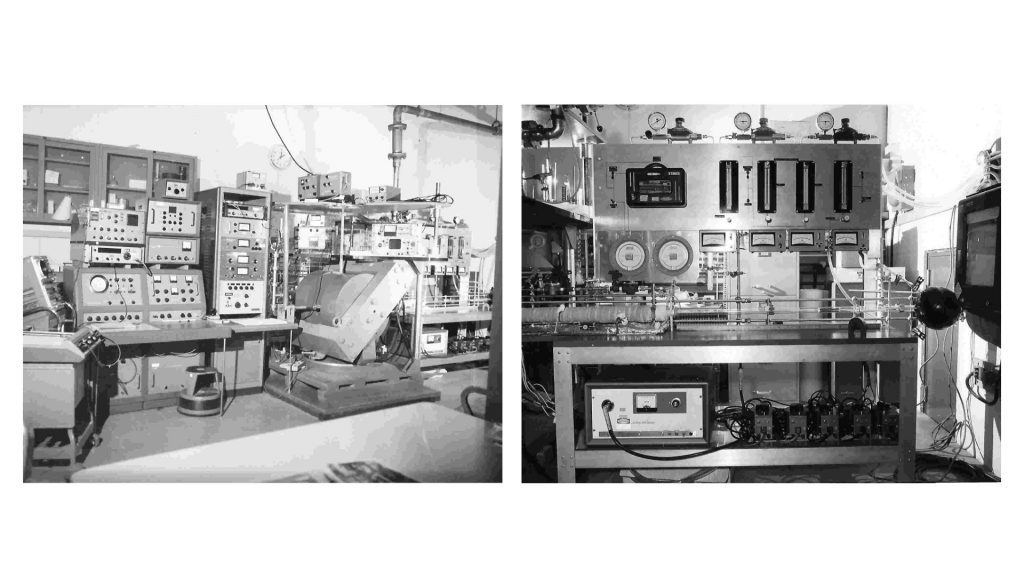
The type of research conducted in this setup of spectrometer is for example described in the following 2 publications…The Journal of the American Chemical Society Volume 86 #5 March 1964 titled “Electron Spin Resonance of Molecules Adsorbed on Synthetic Zeolites.” by Dennis N. Stamires and John Turktvich.
The Journal of the American Chemical Society Volume 86 #5 September 1963 titled “Paramagnetic Resonance Absorbtion of gamma/Irradiated Synthetic Zeolites” by Dennis N. Stamires and John Turktvich.

